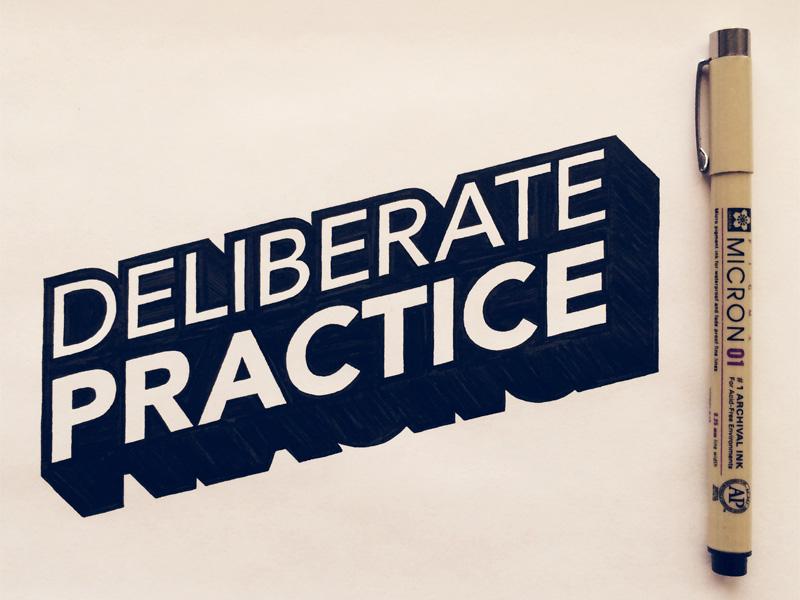Introduction: The Aftermath of Failure - A Hidden Advantage
Every ML engineer has faced it: the dreaded rejection email.
You’ve spent weeks preparing, coding problems, mock interviews, reviewing ML fundamentals, and still, the message arrives:
“We’ve decided not to move forward with your application.”
It stings. Not just because you didn’t get the offer, but because you don’t know why.
Unlike coding competitions, where success is binary and measurable, ML interviews are ambiguous. You could fail due to weak communication, misaligned examples, or subtle technical gaps, and most companies won’t tell you directly.
But here’s the truth:
Failure in an ML interview is not final.
In fact, it’s the single most valuable signal in your career, if you learn to decode it.
Understanding rejection feedback is an advanced skill that separates average engineers from elite ones. The best ML candidates treat every “no” as a dataset, a source of insights to iterate, retrain, and redeploy themselves stronger.
This blog is your post-interview compass.
We’ll walk through exactly how to:
- Interpret silence when no feedback is given
- Decode vague recruiter notes and hidden signals
- Identify specific technical and behavioral weaknesses
- Turn rejections into actionable learning cycles
- Rebuild confidence and prepare smarter for your next interview
Because improvement doesn’t come from success, it comes from structured reflection.
If you can extract data from every rejection, you’ll transform failure into the fastest feedback loop of your career.
As explained in Interview Node’s guide “The Resilient Engineer: Turning Layoffs into Opportunities”, adaptability, not perfection, is the true marker of long-term engineering success.
Section 1: Why Most ML Interview Feedback Is So Vague (and What It Really Means)
You finally get that follow-up email from your recruiter. You open it with cautious optimism, hoping for constructive details. Instead, it reads something like this:
“We enjoyed speaking with you, but we’ve decided to move forward with other candidates. Best of luck!”
Or, if you’re lucky:
“The team felt you could strengthen your communication of design tradeoffs.”
“We’re looking for deeper expertise in system-level thinking.”
That’s it. No rubric. No specifics. Just polite corporate fog.
But beneath that vagueness lies a coded language, one that experienced engineers know how to interpret.
a. Why Companies Keep Feedback Vague
There are three main reasons:
- Legal liability: Companies like Google, Meta, and Amazon avoid specifics to protect against discrimination or bias claims.
- Standardization: Recruiters handle hundreds of candidates per week; they don’t have time for personalized breakdowns.
- Internal calibration: Feedback sometimes exposes internal disagreements between interviewers (e.g., one loved your reasoning, another didn’t).
So, instead of detailed critique, you get “not the right fit.”
The good news? Vague feedback still carries signal, if you know how to read it.
b. Decoding the Common Phrases
| Recruiter Feedback | What It Usually Means |
| “We’re moving forward with other candidates.” | You met expectations but didn’t stand out, work on differentiation or storytelling. |
| “We wanted stronger depth in ML system design.” | You described models well, but not how they fit into pipelines or production contexts. |
| “We were looking for more clarity in your approach.” | You solved the problem but explained it poorly, communication and structure need polish. |
| “Your technical answers were good, but we’re looking for a better fit.” | Soft skills or cultural alignment were off, perhaps defensiveness, verbosity, or lack of enthusiasm. |
| “We’re looking for candidates with more practical experience.” | Theoretical answers were fine, but you didn’t anchor them in real-world projects or data. |
c. The Real Feedback You’re Not Hearing
Recruiters and interviewers rarely say it out loud, but behind closed doors, notes often read like:
- “Candidate jumped into modeling too quickly.”
- “Didn’t ask clarifying questions.”
- “Missed obvious tradeoff between latency and accuracy.”
- “Talked too long about theory.”
If you hear “fit,” “clarity,” or “depth,” these are almost always proxies for communication, structure, or application issues, not intelligence.
d. How to Capture Hidden Signals
Immediately after every interview, jot down:
- What questions were asked
- Where you hesitated or overexplained
- What follow-ups you got from interviewers
- Their tone changes or shifts in engagement
Within those subtle cues lie the true feedback you’ll never receive officially.
As emphasized in Interview Node’s guide “Cracking the FAANG Behavioral Interview: Top Questions and How to Ace Them”, success in ML interviews isn’t about perfect answers, it’s about interpreting feedback loops and refining your approach iteratively.
Section 2: The 5 Types of ML Interview Feedback (and How to Decode Each One)
Not all rejections are created equal. When you fail an ML interview, the underlying reason often falls into one of five feedback categories, even if the company never tells you directly.
Learning to recognize which type applies to your situation is the first step in fixing it efficiently.
Let’s break them down one by one.
a. The Technical Knowledge Gap
Hidden signal: “You didn’t demonstrate mastery of key ML fundamentals.”
This is the most common and easiest to fix. It happens when you:
- Forget definitions (e.g., “What is regularization?”)
- Misapply concepts (e.g., using cross-entropy loss incorrectly)
- Lack clarity in explaining architectures (e.g., CNNs or transformers)
How to decode:
If the interviewer kept drilling deeper (“Why did you choose that loss function?” or “How would this scale?”), they were testing your depth, and found a limit.
How to improve:
- Revisit your weak topics with targeted resources (e.g., “Bias-Variance Tradeoff,” “Feature Engineering”)
- Use Interview Node’s topic-based prep or Kaggle notebooks to connect theory to implementation.
- Teach the concept out loud, if you can’t explain it clearly, you don’t understand it deeply enough.
b. The System Thinking Gap
Hidden signal: “You focused on models, not the pipeline.”
Many candidates nail modeling but fail to think about data ingestion, retraining, or scalability.
If your feedback included phrases like “lacked production understanding” or “wanted more design clarity,” this is your category.
How to improve:
- Study ML system design through end-to-end case studies.
- Rehearse explaining how you’d deploy, monitor, and retrain models.
- Use frameworks like Airflow, Docker, and MLflow to ground your examples.
Check out Interview Node’s guide “Mastering ML System Design: Key Concepts for Cracking Top Tech Interviews” to dive deeper into real-world frameworks.
c. The Communication Breakdown
Hidden signal: “You solved the problem, but we didn’t follow your thinking.”
Interviewers evaluate how you speak your logic, not just what you code.
If your feedback includes “clarity,” “fit,” or “structured thinking,” this is your issue.
How to improve:
- Practice think-aloud problem solving in mock interviews.
- Record yourself explaining concepts; refine for brevity and precision.
- Follow a logical structure (e.g., “I’ll clarify assumptions → outline approach → discuss trade-offs”).
d. The Behavioral or Soft Skill Gap
Hidden signal: “We’re unsure how you’d work on a team.”
This feedback is often disguised as “fit” or “communication.”
Maybe you sounded defensive when challenged, or too uncertain about your own results.
How to improve:
- Use the STAR method (Situation, Task, Action, Result) for behavioral responses.
- Reflect emotional control and curiosity instead of overconfidence.
- Study examples from Interview Node’s guide “Soft Skills Matter: Ace 2025 Interviews with Human Touch” to sharpen interpersonal presence.
e. The Alignment Gap
Hidden signal: “You’re skilled, but not aligned with our priorities.”
Sometimes, rejection isn’t about your ability, it’s about direction.
If you emphasize generative AI research and the company’s focus is recommender systems, you appear mismatched.
How to improve:
- Tailor your answers and examples to the company’s ML focus areas.
- Research their papers, products, and recent open-source projects.
- Refine your “Why this company?” answer until it feels specific and natural.
🧭 Key Takeaway:
Every feedback type represents a different vector for improvement.
When you can categorize your rejection, you can design a precision learning loop, instead of blindly preparing for everything.
Section 3: How to Request (and Get) Actionable Feedback from Recruiters
You might assume that once you’ve been rejected, the conversation with your recruiter is over.
But that’s not true, if you know how to ask the right way.
Most candidates send one-line emails like:
“Can you please share feedback from my interview?”
That rarely works. Recruiters aren’t ignoring you, they’re simply restricted by time, policy, and liability.
However, when you frame your request strategically, you can often extract useful insights, even when they “can’t share specifics.”
Here’s how.
a. Wait 48 Hours Before You Reach Out
Give recruiters time to finalize their notes and move through internal reviews.
Following up too soon can feel defensive or desperate.
After 48–72 hours, send a calm, professional note showing you’re looking to learn, not to contest.
Example:
“Thank you again for the opportunity to interview. I really enjoyed discussing ML system design with the team.
I’m constantly looking to improve, could you share one or two areas where I could strengthen my technical or communication skills for future roles?”
This tone does three things:
- It frames you as growth-oriented.
- It keeps the recruiter comfortable (you’re not arguing the result).
- It invites focused, helpful insights.
Even if they can’t share exact details, they might drop hints like:
“You might focus more on model deployment discussions.”
or
“We’re seeing candidates go deeper on scaling and data versioning.”
Those small hints are gold.
b. Use Specific, Open-Ended Prompts
If you just ask for “feedback,” you’ll get nothing.
Instead, give options:
“I’d love to improve. Was there anything I could do better in (1) technical reasoning, (2) communication, or (3) system design clarity?”
This gives recruiters a safe structure to respond within.
They can reply without overstepping policy, and you still get valuable signal.
c. Follow the 2x2 Reflection Rule
Once you get feedback, jot down:
- 2 things you did well (to preserve)
- 2 things you’ll fix (to improve)
The worst mistake is to react emotionally or dismiss feedback that stings.
Every critique is a new training data point for your next iteration.
d. Be Memorable-for the Right Reasons
Most engineers go silent after rejection. But polite, thoughtful follow-ups leave an impression.
Recruiters often re-engage top candidates months later when new roles open up, and they remember the ones who showed maturity in rejection.
If you stay professional, you’re not closing a door, you’re keeping a pipeline open.
As noted in Interview Node’s guide “From Interview to Offer: InterviewNode’s Path to ML Success”, persistence and feedback-driven improvement are the twin pillars of every successful engineering career.
Section 4: Turning Silence into Signal-When Companies Give No Feedback
One of the most frustrating experiences for ML engineers is hearing nothing after an interview.
No feedback. No follow-up. Just digital silence.
You refresh your inbox for days, maybe weeks, waiting for closure that never comes.
But here’s the truth: silence is feedback.
You just need to know how to read it.
a. Understand What “No Response” Really Means
Recruiters and hiring managers don’t ghost candidates because they’re cruel, they do it because:
- They’re overloaded. Recruiters juggle hundreds of roles, and rejections often get deprioritized.
- They have legal limits. Some companies (especially FAANG) restrict written feedback.
- They’re indecisive internally. A hiring manager might still be debating your case.
So instead of taking silence personally, treat it as a neutral signal, a prompt to reflect, not to ruminate.
b. Reverse-Engineer the Interview Dynamics
Silence usually means your performance was average but not disqualifying.
The team saw potential but didn’t find the “wow” factor.
Ask yourself:
- Did I build rapport during introductions?
- Did I connect my project experience to the company’s mission?
- Did I pause to ask clarifying questions during problem-solving?
Often, it’s not your technical ability but your presence and engagement that fell short.
Example:
If you nailed the coding but didn’t ask questions about scalability, they may have concluded you “lacked system awareness.”
c. Audit Your Interview Recording or Notes
If you used a mock interview platform like InterviewNode, go back and review recordings or transcripts.
Analyze patterns like:
- Talking too long without structuring thoughts
- Missing signals from the interviewer
- Over-indexing on code and underplaying design reasoning
When you can self-identify the “flat moments” of your interview, you’re decoding silence through reflection.
d. Use Peer and Mentor Feedback as a Proxy
If companies won’t tell you, your network will.
Ask a trusted mentor or colleague to simulate the same questions and critique your responses.
You’ll often discover:
- Gaps in clarity (“I didn’t follow your model choice reasoning”)
- Weak transition points (“You jumped to code too early”)
- Missed storytelling opportunities (“You undersold your impact”)
That kind of feedback is far richer, and repeatable.
e. Stay in Motion-Silence Isn’t the End
The biggest trap after rejection silence is stagnation.
Momentum cures discouragement.
Update your portfolio, reapply strategically, and improve one specific skill each week.
Remember, interviews are probability games, the more you iterate, the higher your success odds become.
As explained in Interview Node’s guide “The Psychology of Interviews: Why Confidence Often Beats Perfect Answers”, success in ML interviews often depends more on emotional regulation than technical flawlessness.
Section 5: Creating Your Personal Feedback System-A Framework for Iteration
The difference between candidates who stagnate and those who improve rapidly isn’t luck, it’s structure.
Top-performing ML engineers don’t just review feedback; they engineer a feedback system around their interview process.
Let’s walk through how to create a repeatable, data-driven framework for improvement, one that turns rejection into measurable growth.
a. Treat Feedback Like a Dataset
Every interview you take generates data points: questions asked, responses given, recruiter tone, follow-up patterns.
Most candidates ignore this information, elite ones analyze it.
Create a simple table (in Notion, Excel, or Obsidian) tracking:
| Round | Company | Question Type | Confidence (1–5) | Outcome | Self-Notes |
| Technical (ML) | Meta | System Design | 3 | Rejected | Weak on data versioning concepts |
| Behavioral | Amazon | Leadership | 4 | Rejected | Talked too long, missed structure |
Over time, you’ll notice patterns. Maybe you consistently underperform in ML design questions or behavioral follow-ups.
That’s not failure, that’s feedback aggregation.
b. Identify the “Root Cause” Behind Every Weakness
Behind every interview failure lies one of three causes:
- Knowledge Gaps: Missing fundamentals or tools (e.g., didn’t know MLflow or model drift monitoring).
- Structure Gaps: Poor communication or sequencing of ideas.
- Confidence Gaps: Stress and unclear self-presentation.
By classifying your failures into these categories, you transform emotional reactions into actionable diagnoses.
c. Set SMART Improvement Goals
Generic goals like “get better at ML design” don’t work.
Instead, use the SMART framework (Specific, Measurable, Achievable, Relevant, Time-bound):
- Specific: “Practice 3 ML system design problems using InterviewNode prompts.”
- Measurable: “Record and analyze 2 mock interviews per week.”
- Relevant: “Focus on communication under time pressure.”
- Time-bound: “Fix within 30 days.”
SMART goals convert abstract “improvement” into iterative sprints, similar to engineering cycles.
d. Build Feedback Loops Using Mock Interviews
Feedback without iteration is wasted.
Schedule regular mock interviews (AI-assisted or peer-based) to test your adjustments.
Use InterviewNode or Pramp to get third-party perspective.
If you’re consistently improving one metric, say, clarity in ML reasoning, you’ll see tangible behavioral change over time.
Mock interviews are not just practice; they’re data validation rounds for your personal improvement model.
e. Reflect Weekly - the 10-Minute Ritual
Every week, spend 10 minutes writing:
- 1 thing you learned from past interviews
- 1 weakness you corrected
- 1 behavior you improved
This small ritual compounds over time.
It turns reactive feedback into proactive mastery, a hallmark of senior-level ML engineers.
As highlighted in Interview Node’s guide “ML Interview Tips for Mid-Level and Senior-Level Roles at FAANG Companies”, mastery isn’t achieved through constant success but through consistent feedback-driven refinement.
Section 6: How to Emotionally Process Rejection Without Losing Momentum
Let’s be honest, rejection hurts.
No matter how experienced you are, that email or silence can make you question your skills, your worth, and sometimes even your career direction.
But here’s the paradox: the emotional side of interview feedback is often more important than the technical one.
If you don’t process the emotions properly, you’ll carry stress and doubt into your next interview, and sabotage yourself again.
So, how do top-performing ML engineers recover quickly while others spiral? They follow a structured emotional debrief, treating their mental resilience like another engineering system to optimize.
a. Normalize the Rejection Data
In machine learning, not every model converges on the first try, and that’s expected.
Interviews are no different.
Think of each rejection as one failed epoch in your personal training loop.
You’re gathering gradient updates, refining hyperparameters (communication, technical breadth, composure), and improving your loss function (performance gaps).
When you treat rejections as iterations, not verdicts, you remove the shame and retain the signal.
b. Separate Identity from Outcome
Many engineers internalize rejection as “I’m not good enough.”
But that’s like saying a model is useless because it failed one validation set.
The truth? You’re just overfitting to that one company.
Take a breath. Remind yourself:
“I failed this process, not this profession.”
That mindset shift frees you from emotional baggage and allows rational post-analysis.
c. Build a “Post-Interview Cooldown” Ritual
After every rejection, follow a simple three-step cooldown:
- Pause (24–48 hours): No overthinking. No LinkedIn doomscrolling.
- Reflect (30 minutes): Note what went well, what didn’t, and what confused you.
- Reframe (Positive Summary): Write one insight gained, e.g., “I learned how to structure ML design questions more cleanly.”
This process reduces emotional load and creates a feedback-ready mental state.
d. Use Peer Support Wisely
The ML interview grind can feel isolating.
Join online communities, like InterviewNode’s peer Slack groups or Kaggle forums, where others share similar experiences.
Talking with others normalizes the challenge, helps you see patterns, and reminds you that even the best engineers have heard “no” many times before hearing “yes.”
e. Focus on Rebuilding Confidence
Confidence isn’t arrogance, it’s trust in your ability to improve.
You rebuild it by measuring progress, not outcomes.
For example:
- You solved two new ML system design problems this week.
- You clarified your behavioral answers using the STAR method.
- You refined one GitHub project’s documentation.
Small, visible progress fuels psychological momentum.
As explained in Interview Node’s guide “The Resilient Engineer: Turning Layoffs into Opportunities”, resilience isn’t just bouncing back, it’s bouncing forward. Each rejection adds calibration data that fine-tunes both skill and mindset.
Section 7: Translating Feedback into a Targeted Improvement Plan
Understanding feedback is only half the battle, implementation is where transformation happens.
Many ML engineers read their rejection emails, nod thoughtfully, then fall back into old habits.
But if you can systematize your recovery, each failed interview becomes a launchpad for measurable growth.
Let’s explore how to turn vague recruiter remarks, your own reflections, and mock results into a step-by-step improvement plan that compounds over time.
a. Categorize Feedback by Domain
Start by dividing your weaknesses into three actionable buckets:
| Domain | What It Covers | Example Weakness |
| Technical | Algorithms, system design, ML modeling | Weak understanding of data versioning or pipeline orchestration |
| Behavioral | Communication, teamwork, leadership | Rambling answers, poor structure, lack of ownership |
| Strategic | Company alignment, project storytelling | Generic examples, unclear connection to business impact |
Once categorized, assign one improvement focus per cycle (e.g., “Behavioral clarity” for two weeks).
This avoids cognitive overload and ensures deep, sustained progress.
b. Build a “Feedback-to-Action” Table
After each rejection, log feedback and connect it directly to concrete next steps.
| Feedback | Root Cause | Action Plan | Verification |
| “Wanted deeper ML design insights” | Lack of production awareness | Study Airflow + MLflow pipeline integration | Explain design trade-offs in mock interviews |
| “Could improve communication clarity” | Unstructured responses | Use STAR framework for every behavioral question | Record and self-review 2 mock interviews |
| “We were looking for a better fit” | Weak company-specific storytelling | Study company’s ML stack + research papers | Redesign “Why X?” answer for relevance |
By explicitly linking signal → cause → action → validation, you transform abstract feedback into measurable growth steps.
c. Schedule Iteration Sprints
Treat your self-improvement like ML experimentation, in short feedback loops.
Use weekly sprints:
- Week 1–2: Technical reinforcement
- Week 3–4: Communication polish
- Week 5: Mock validation
Track your performance over time using InterviewNode’s mock analytics or peer review logs.
If your “clarity” score or completion rate improves across sessions, you’ve closed a gap.
d. Convert Rejected Interviews into Case Studies
Don’t bury your failures, study them.
After each interview, summarize:
- The company’s ML focus (LLMs? Recommendation systems?)
- What you learned from their questions
- How you’d answer differently next time
This not only builds awareness but also creates a personal ML interview guide that you can refine over months.
By your fifth interview, you’re not just prepared, you’re pattern-trained on what top tech companies test.
e. Measure Momentum, Not Just Success
Improvement isn’t binary.
You may still face rejections even after progress, but the key metric is direction, not destination.
When your answers become sharper, your structure tighter, and your confidence steadier, you’re winning.
The offer will follow naturally.
As reminded us Interview Node’s guide “From Interview to Offer: InterviewNode’s Path to ML Success”, successful candidates don’t just “study harder”, they evolve smarter by treating feedback as an engineering challenge, not a personal failure.
Section 8: Conclusion - From Rejection to Reinvention
Rejection is not the end of your ML journey. It’s the start of your iteration phase.
Every engineer who lands a role at Google, Meta, Anthropic, or OpenAI has one thing in common: they’ve failed before, sometimes many times.
The difference between those who give up and those who eventually get hired isn’t talent or intelligence, it’s how they process feedback.
When you treat rejection as an opportunity to learn rather than a verdict on your worth, you become unstoppable.
That’s not motivational fluff, it’s data-backed logic.
Every feedback cycle increases your clarity, confidence, and consistency, three attributes that interviewers instantly detect.
By building a structured approach to reflection, analysis, and retraining, you transform interviews from stressful hurdles into controlled experiments, each one refining your professional “model weights.”
Remember:
A failed interview isn’t proof you can’t do the job.
It’s proof you’re still optimizing your approach to showing that you can.
The engineers who rise fastest are those who run their feedback loops faster than anyone else.
10 Detailed FAQs: Decode, Improve, and Reapply Smarter
1. What’s the best way to interpret vague recruiter feedback like “not the right fit”?
That usually means you met technical expectations but didn’t differentiate yourself.
Focus on communication and storytelling, connect your projects to business outcomes or impact.
For instance, don’t just say, “I built a recommendation model.”
Say, “My model improved click-through rate by 12%, influencing a product that reached 10M users.”
2. What should I do if I get no feedback at all after my interview?
Silence is also feedback. It often means you were close but not top-tier.
Perform a self-audit: write down the hardest question, where you paused longest, and what seemed to disengage the interviewer.
Treat those moments as weak signals for improvement.
(See Interview Node’s guide “The Psychology of Interviews: Why Confidence Often Beats Perfect Answers” for reframing silence as an opportunity rather than an insult.)
3. How soon should I ask a recruiter for feedback?
Wait 48–72 hours post-rejection.
Then, send a concise, gratitude-driven email like:
“I really valued the discussion about your ML infrastructure. I’d love to improve, could you share one or two areas I should focus on?”
This phrasing shows humility and curiosity, qualities recruiters remember positively.
4. What if I receive conflicting feedback from different interviewers?
That’s common.
Different interviewers prioritize different qualities, one may value precision, another creativity.
Aggregate their comments into categories (technical, design, communication), find overlap, and work on the most repeated themes first.
5. How do I emotionally recover from multiple rejections in a row?
Recognize that rejection isn’t regression, it’s iteration.
Implement a “cooldown ritual” (pause → reflect → reframe) before jumping into more prep.
Join peer groups or mock interview communities like InterviewNode, where you’ll see others experiencing the same process, it’s grounding and empowering.
As highlighted in Interview Node’s guide “The Resilient Engineer: Turning Layoffs into Opportunities”, emotional intelligence under pressure often defines long-term career growth more than any technical metric.
6. How can I track improvement over time?
Use a feedback log, a structured table with columns for company, round, topic, weakness, and next action.
Example:
| Company | Weakness | Fix Plan | Next Step |
| Amazon | Weak data pipeline explanation | Study Airflow DAGs | Redesign system answer in mock interview |
Patterns reveal faster than feelings. Within a few interviews, you’ll see measurable progress.
7. What if I keep getting stuck at the same stage?
If you repeatedly fail at the same round (say, system design), you’re likely missing contextual reasoning.
You understand the concepts but can’t connect them to real product trade-offs.
Watch end-to-end case studies or system design breakdowns on InterviewNode and practice explaining why each design choice matters.
8. How should I practice explaining feedback-driven improvement to future recruiters?
You can frame your growth as a strength:
“After my last interview, I realized I wasn’t communicating system trade-offs clearly. I focused on explaining model scalability and retraining better, and that’s made my recent projects much stronger.”
Recruiters love hearing you apply lessons proactively, it signals self-awareness and adaptability.
9. What role does AI play in improving feedback analysis?
AI-powered tools (like InterviewNode’s feedback engine or Yoodli) transcribe, evaluate, and score your interviews across clarity, confidence, and tone.
Use this to create quantitative progress indicators, e.g., “Reduced filler words by 30%,” or “Improved ML reasoning clarity by two levels.”
These insights accelerate your improvement loop.
For more, check out [The Future of ML Interview Prep: AI-Powered Mock Interviews].
10. How do I know when I’m ready to reapply?
You’re ready when you can:
- Clearly explain your past mistakes.
- Demonstrate improvement in your next mock or take-home.
- Feel calm, not desperate, during new interviews.
That’s the moment your learning has consolidated.
Reapply not when you feel perfect, but when you feel prepared and informed.
Final Reflection
Rejections are milestones, not stop signs.
They’re the universe’s way of saying, “Refine the model, retrain the weights, relaunch stronger.”
Machine learning engineers succeed because they understand iteration, and your career is no different.
Each failed interview adds data to your personal model.
Each reflection step reduces your error rate.
Each improvement sprint boosts your precision and recall, until, inevitably, you pass.
So the next time you receive that dreaded rejection email, don’t see it as a door closing.
See it as a training cycle completing.
Because you’re not starting over, you’re starting smarter.






